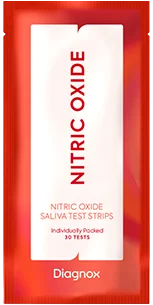Since the reagent strips are semi-quantitative, you may not always find an exact color match. In general, the clinical practice is to choose the closest color match to find the results. Also, it is essential to appreciate that certain drugs/medications, vitamins, and dietary choices can alter urine parameters (mostly acutely). For example, consuming highly pigmented foods (e.g., beetroot) may temporarily change urine color. Or consuming a lot of Vitamin C can impact the integrity of reagents.
For the pH, the reagent pad changes color from bright orange (for low pH) to deep/dark green (for high pH). A blue color is not generally reported on Urinox-10 strips. Some of the possible reasons for an unusual could be as follows:
1. Strip was immersed in the urine sample for way too long. This could cause color bleeding from the adjacent pads, especially from protein-dye. The technical term for it is “run-over effect.” This term is used to describe what happens when excess urine is left on the stick after dipping, and so the acid buffer from the reagent in the protein area runs onto the pH area. This type of contamination can cause a false reading of the pH. To avoid this, quickly remove the strip from the urine sample (just enough to wet the pads). Drag the edge of the strip against the rim of the container to remove excess fluid and tap it onto a paper towel, and lay the strip flat.
2. Not reading the results at the correct time. The results of the pH test are ready in 1 minute. Try to read at exactly 1-minute mark.
3. It’s essential to recognize that there is a chance that strips may have gone bad. While individual packing of strips ensures test integrity up to the expiration date, storage conditions such as temperature or fluctuating temperature may cause strips to go bad.
Here are some suggestions/recommendations:
1. Please repeat the test at different times of the day or on different days to see if you get similar findings.
2. Optimally hydrate yourself so that any effect of medications or foods that may alter normal behavior subsides.
If your tests report an alkaline urine, it is typically due to a diet rich in greens/vegetables, due to UTI-causing bacteria (which thrive in an alkaline environment), or ingestion of bicarbonates or alkaline foods. Other causes of alkaline urine could be metabolic alkalosis or respiratory alkalosis.
Urinalysis strip (dipstick) is a narrow plastic strip which has several square-shaped pads of different colors attached to it. Each small pad represents a component of the test used to interpret urinalysis. When dipped in the urine, pad colors change in response to the chemical characteristics of the urine. The color changes are noted at specific time intervals and compared against the reference color chart/key.

























































































%20with%20at-home%20urine%20testing.webp)














































%20(1).jpg)

.webp)


